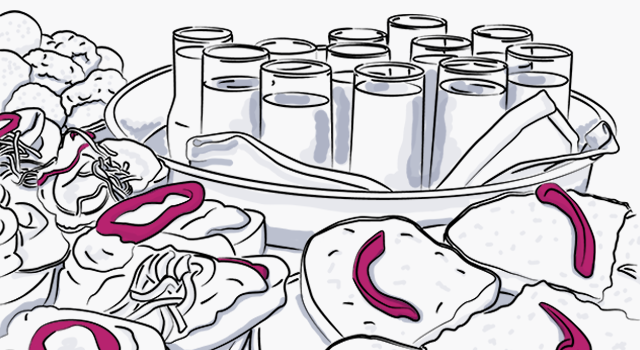
Tech Thursday: Banquet Table Layout Generator Ideas
Banquet table setup diagrams run the gamut from the tried-and-true to something new under the sun.
It’s obvious why hoisting diners and their dinners into the sky is not the most common banquet setup option, but what makes the tried-and-true setups such classics? How can you set up a reception, party, or celebration in a way your guests will love?
Read on to discover the most popular types of banquet tables, why they are so popular, how to lay them out correctly, and six unexpected banquet table layout ideas for weddings and parties.
Plus, make your life a lot easier by discovering how to use a banquet table layout generator. It doesn’t take much to get started”so let’s go!
In this post:
- Most Popular Types of Banquet Tables
- How to Decide Which Banquet Tables To Use
- How to Get Banquet Table Sizing and Spacing Right
- Unexpected Banquet Table Layout Ideas
- Guide to Social Tables Banquet Table Layout Generator
First things first: The most popular types of banquet tables
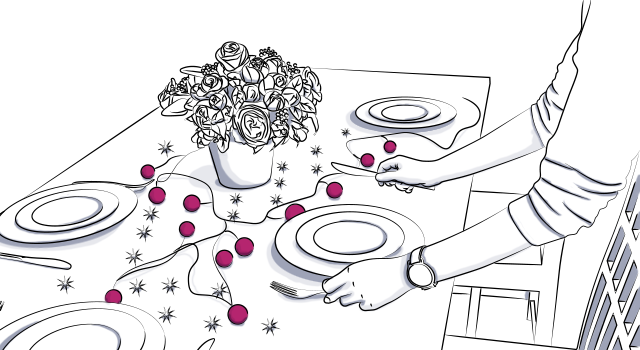
By far, the most popular types of banquet tables are round and rectangular. These classics may be stocked at a venue or can be rented easily from a supply company. Linens for the standard shapes and sizes should be easy to come by, too.
1. Round banquet tables
Round tables are popular because they allow everyone at the table to see and talk to everyone else. They are familiar and celebratory, and they enable table layouts that make the most efficient use of space in the room.
The most common sizes of banquet rounds are 60 across and 72 across.
- A 60 round table seats 8 guests comfortably. Or you can fit 6 guests in a crescent if you take away seats that would put a guest’s back to the front of the room.
- A 72 round seats 10 guests (or 8 guests in a crescent).
Though not used for guest seating, don’t forget pedestal rounds. This common table type is usually 30 across and can often be adjusted anywhere between seated height (29) and countertop height (36). Pedestal rounds are useful for displaying gifts, a guest book, cake, or other special event features.
2. Straight banquet tables
Straight tables are popular because they can have the feel of a formal occasion, a family-style dinner, or a fusion of the two. They are also an efficient use of space. With straight tables, you can choose both the length (and, of course, line them up end-to-end) and the width.
The most common lengths of straight banquet tables and how many guests they seat:
- A 60 (5 foot) rectangular table seats 6 guests
- A 72 (6 foot) rectangular table seats 6 to 8 guests
- A 96 (8 foot) rectangular table seats 8 to 10 guests
Standard banquet tables are 30 wide. If you are setting up classroom-style seating (with seats on only one side), go for an 18 width. You’ll save enough room on every two rows to add a third.
Though standard width is a great option for straightforward dining, it’s a bit narrow for dramatic centerpieces, florals, candles, glassware, bread, table numbers, and family-style platters. To accommodate some of those things, you might go 36 wide, or for all of them you might use a table that’s 48 across.
[Tweet “How can you set up the banquet table at a reception, party, or celebration in a way your guests will love?”]
How to decide which banquet tables to use: Four top tips
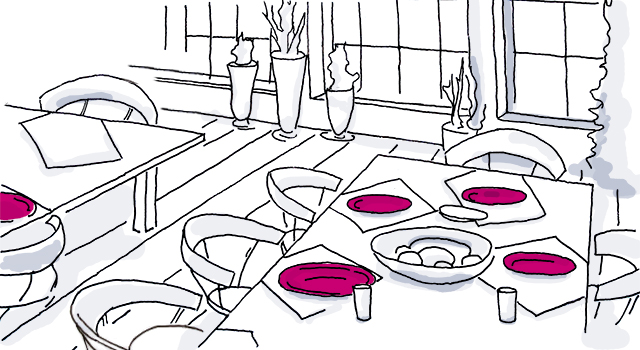
1. Think about size constraints when deciding which banquet tables to use.
If you’re nearing maximum capacity for the venue, congratulations on your event’s popularity. Banquet rounds will make the most efficient use of space. (Play around in a banquet table setup diagram to see how and why this is the case.) Take your robust guest list and seat them in staggered rows of round tables for maximum elbow room.
2. Consider social aspects when selecting banquet tables.
In rounds, whole tables can talk more easily. In rectangles, people will be more limited to their neighbors on either side and across the table. If you seat your guests at rectangular tables, put some thought into conversational seating groups.
3. Plan along with decor when choosing banquet tables.
Your room layout and decor should work as one. Rectangular banquet tables look fabulous with overhead/hanging installations of flowers, garlands, or fabric, or inside a long tent. They can also be outstanding for photos that capture symmetry and angles.
With either type of table, make sure the centerpieces are not so tall that they block diners’ view of each other. Rounds will need just one centerpiece per table, while rectangular tables will require a few, or one super-long centerpiece.
4. Use a planning app to get a sense of the layout in the space.
Banquet rounds can be the better choice for irregularly shaped rooms or when you’re pushing a venue’s maximum capacity. In either case, you’ll want to see the setup on an event layout tool to make sure your numbers are accurate and to see how the event will flow. Choose a tool that makes it quick and easy to hit the ground running.
Rectangular banquet tables can be a better choice in long rooms or rooms with lots of featureless wall space. Mock up your design in your layout tool to see how it fits in the space, but don’t neglect thinking about the guest experience. For example, keep in mind that if you position many banquet tables end-to-end, guests will have a long walk to the other side of the table. Consider guest convenience and access to the dance floor, restrooms, buffets, and fire exits.
Your event will feature more than just banquet tables, of course. There might be pedestal rounds for special items, buffet tables, a head table, a stage or podium, a dance floor, a DJ or band, a bar, or a cocktail area with hightops. Add these to your event diagram to get a sense of your usable seating area and how the event as a whole will flow.
How to get banquet tables’ sizing and spacing right
To estimate how many banquet tables fit in a room, first find out the ˜clear seating’ dimensions of the room. That’s the square footage of the room minus any clearance for fire exits, parts of the room that won’t fit a banquet table, such as space required for the bar and the space behind it or the dance floor.
Banquet tables need about 5 feet between them for chairs and walkways. So from table center to table center, each 72 banquet round in a row needs 11 feet: 6 feet of table and 5 feet of space. (60 rounds need 10 feet: 5 feet of table, and 5 feet of space. And 36 wide rectangular tables need 8 feet between table centers: 3 feet of table and 5 feet of space.)
To determine your approximate capacity, get out your clear seating dimensions. Let’s say they’re 60’ by 80’. If you’re using 72 rounds, you need to divide by 11 feet per table to know how many tables will fit in a row that’s 60’ long. 60 divided by 11 is 5 and a bit. Since ˜a bit’ of table doesn’t work, the answer is 5 full tables per row.
Then you need to calculate how many of those rows of those tables can fit in the 80’ dimension. 80 divided by 11 is 7 and a bit, so: 7 rows.
Multiply those together. 5 tables per row x 7 rows = 35 tables.
Thirty-five tables is the estimate”and the maximum, if the clear seating area were full of tables and nothing else. This estimate may be revised downward if you need space for a stage, DJ booth (and space behind it for cords), buffet stations, or other needs.
A banquet table layout generator makes it very easy to see what fits and how. As you make changes (and changes and more changes) to your diagram, use tools such as Social Tables’ Service Perimeter editor to make sure the clearances are still right.
6 Unexpected banquet table layout ideas for weddings & parties:
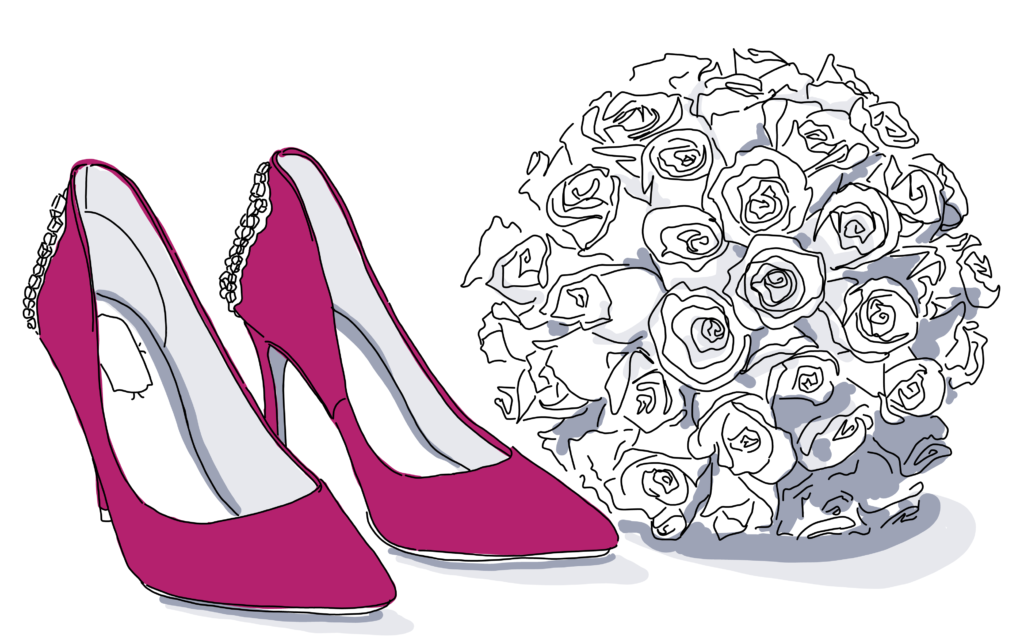
1. Mix of rectangular and round tables
Unleash your creativity! A mix of rectangular and round tables can be laid out in a fantastic number of ways. The look can be dynamic and interesting, and you can play with grouping guests according to the table type and size they might like best.
You need to be savvy about floor plans and event flow to make sure your design will work with real people in it”and remember to check that your clearances make sense.
2. Mix of sizes
Who says you have to divide your guest list evenly into groups of 8 or groups of 10? Use a mix of small, medium, and large tables of the same shape. The repeated shape in different sizes adds a ton of visual interest while effortlessly keeping a unified look.
3. Unusual table shapes
Banquet rounds and rectangular tables are the most common, due to their many social and logistical advantages. But other table shapes can suit, too:
Crescents. Extremely unusual! Can be awkward to eat at, due to sightlines and table settings. This is a useful shape when having guests facing one direction is ideal, such as an entertainment offering or speeches during the meal.
Squares. Cool and clean-looking; offers a cafe or bistro vibe. The downside is that every single diner is on a corner.
Serpentine. Visually striking, but these take up plenty of room. Best suited for outdoor venues with room to spare.
4. Surprise configurations
You’ll see a lot of these when searching for unusual layout inspiration. (Something every planner needs from time to time!) You can arrange tables into a wide range of shapes, such as a U, a V, a W, a plus, or X’s and O’s.
Think about the social function of the layout and the event flow, in addition to the aesthetics. For example, a round configuration may not be ideal if the dance floor is in the center”guests on one side will have to navigate the outside of the circle to find the entrance. Here, you’d want it to be two crescents with easy-to-find pathways to the dance floor. V-shaped setups can be challenging if there is only one buffet table near the pointed end. Consider the guests on the inside of the V who have to make their way all the way around”it’s a trek.
Unusual configurations are an especially striking option if cocktails before dinner occur above the dining area, so the overall design is visible.
5. Venue vectors and stand-out elements
Sometimes the venue lends itself to a particular focal point or layout. A long and narrow museum or historical venue, for instance, might call for long tables at the outside of the space, and a mix of table types in the middle for VIPs. Or maybe an outdoor event in the footprint of an old building has a fantastic view. Arrange one or two long tables perpendicular to the view, so most guests can admire it with a slight turn of the head, while the head table enjoys the view straight ahead.
6. Multi-space events
Perhaps the venue is multi-parted: an indoor space with several adjoining rooms, or an outdoor space that spans courtyards, terraces, formal gardens and/or tent space. Spread the tables around, and spread the extras around, too. Situate the cake table, the dance floor, bars, and food options in different spaces to get people moving around.
If the event is in celebration of a particular person or couple”for example, an anniversary, wedding, birthday, or retirement party”the guest(s) of honor in this setup will need to circulate so no guests feel isolated from them.
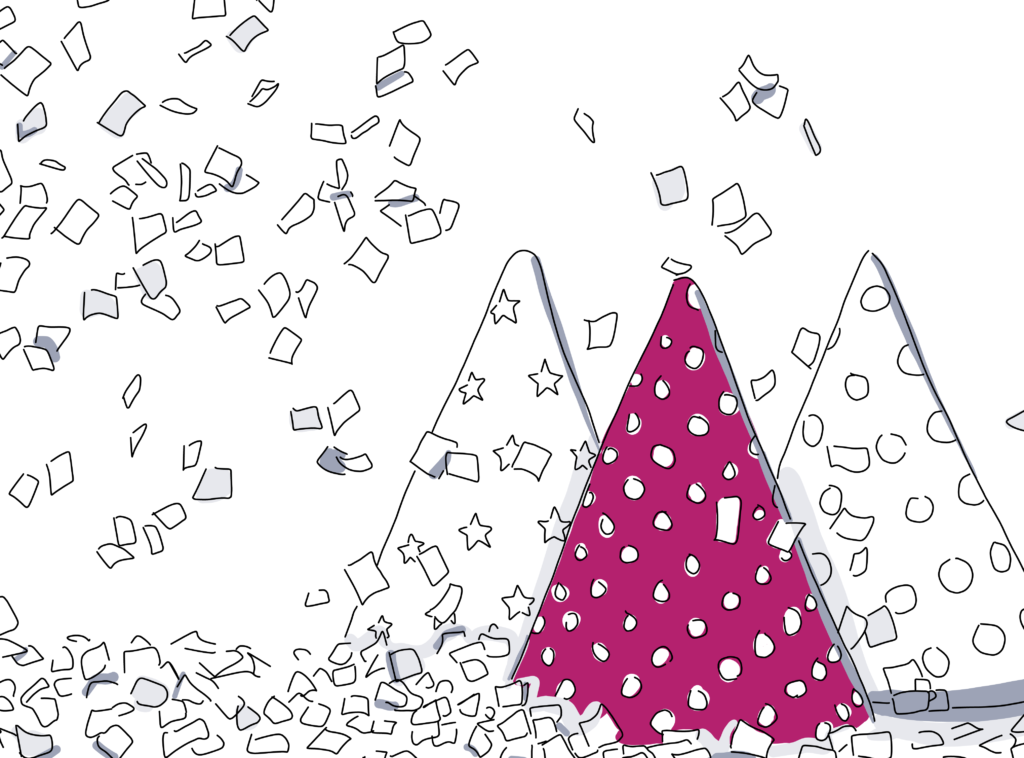
A quick-start guide to using Social Tables’ banquet table layout generator tool:
No matter your chosen banquet table design or your venue, a layout tool can make events easy to envision, plan, and adjust as the date of the event gets closer.
Here’s the quick-start version of Social Tables’ free banquet table layout maker:
- Log in to Social Tables, create a new event and upload a floor plan for the venue. (Lots of venues have this already. If yours doesn’t, just enter the venue dimensions.)
- On the menu on the left, select the chair icon for objects.
- Choose a table type to start with, and drag it to the diagram. (For unusual table sizes, fill in the dimensions yourself.)
- Place tables one at a time, or fill them in at the appropriate spacing with a banquet layout template.
- Move the tables around, angle them, number them, and change the size or color as you desire.
- Add whatever else you need in the space: entertainment, buffets, bar, head table, or cake table.
Now You’re Ready to Get Banquet Table Setup Just Right!
If you’re throwing an in the sky event, your table choice is predetermined. But for any other venue”from English rose garden to museum corridor to banquet hall”you’ve got choices to make. Let this guide help you make quick decisions tailored for each event, and use Social Tables’ event layout tool make the process easier!
See the layout generator in action in this video for our latest update of the tool. Or, if your planning specialty is more business meetings than banquets”check out our 25 meeting room layout ideas.
Still have questions about banquet tables layouts?
Banquet tables need about 5 feet between them for chairs and walkways. So from table center to table center, each 72 banquet round in a row needs 11 feet: 6 feet of table and 5 feet of space. (60 rounds need 10 feet: 5 feet of table, and 5 feet of space.
You can comfortably seat 8 people at one of these tables when set in a line, and 10 when they stand alone.

